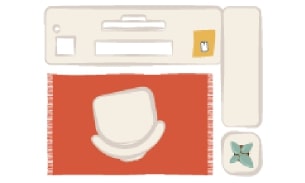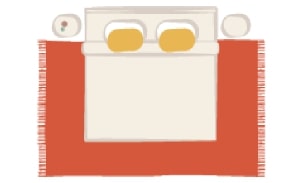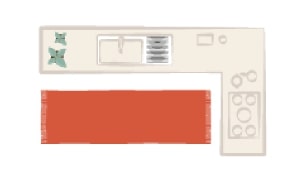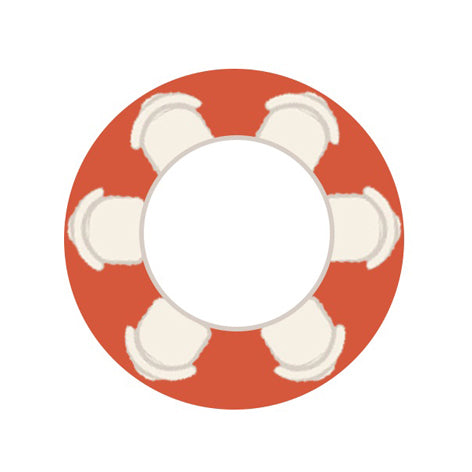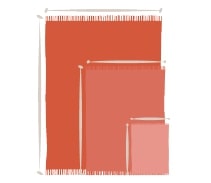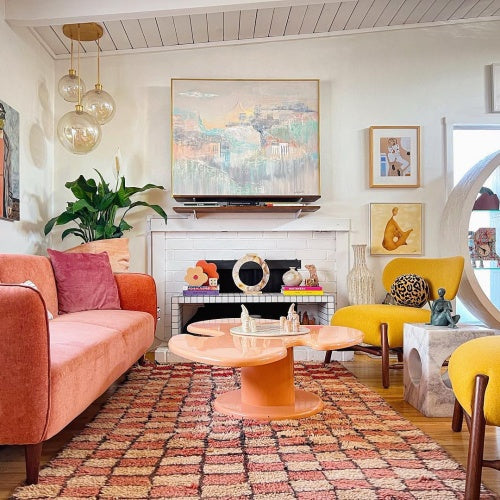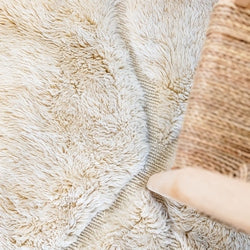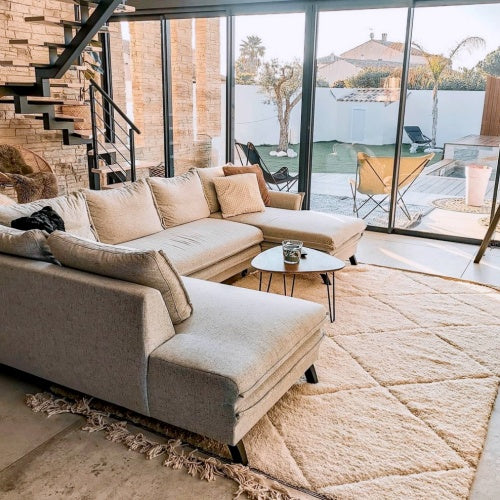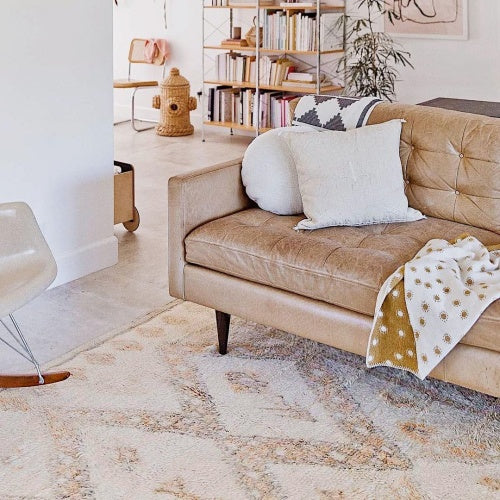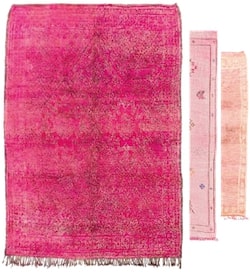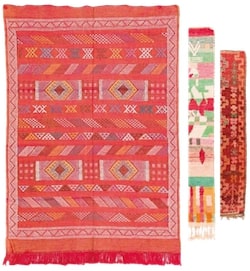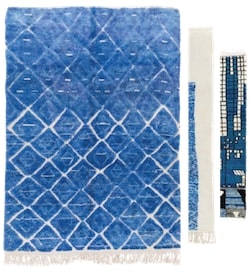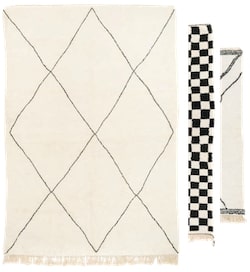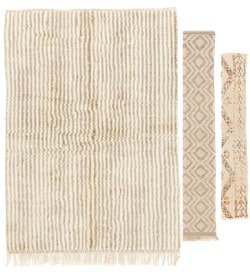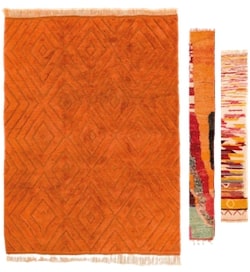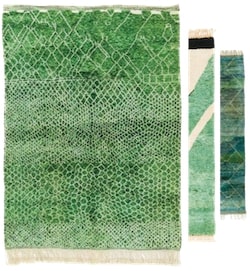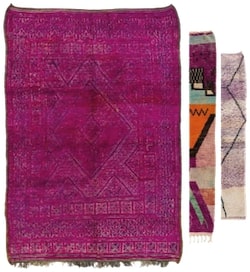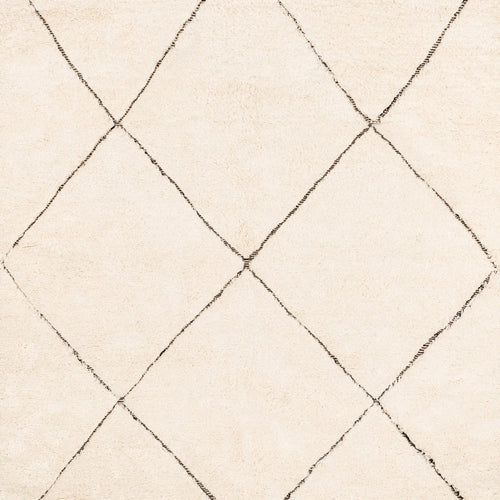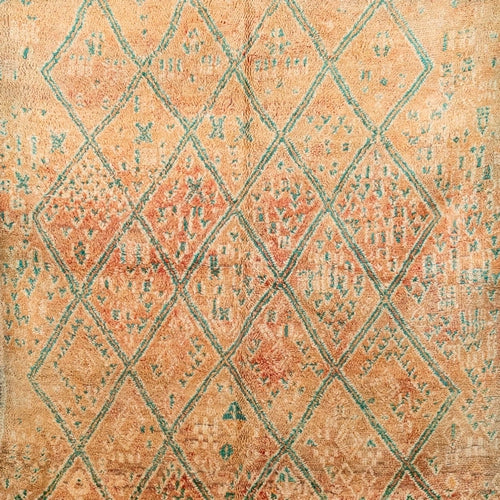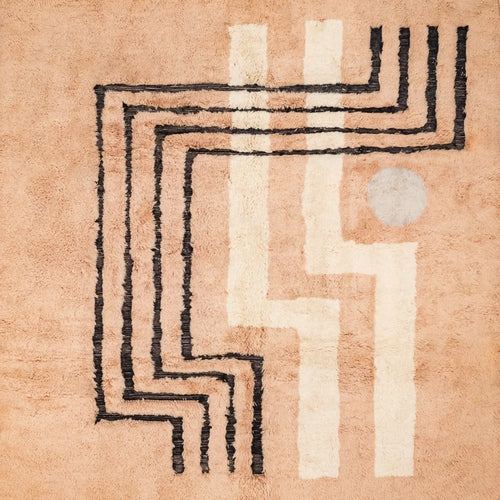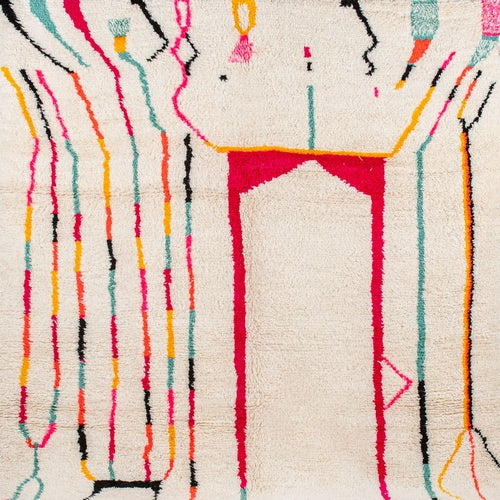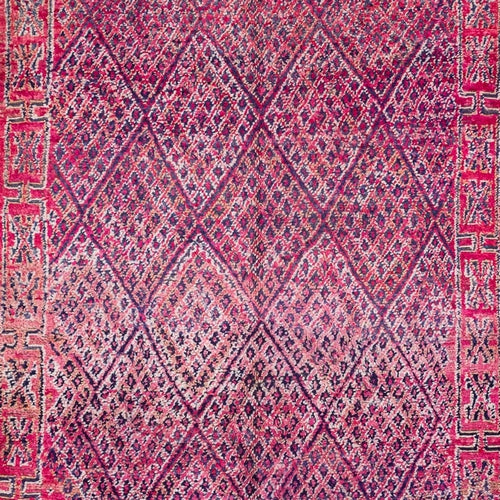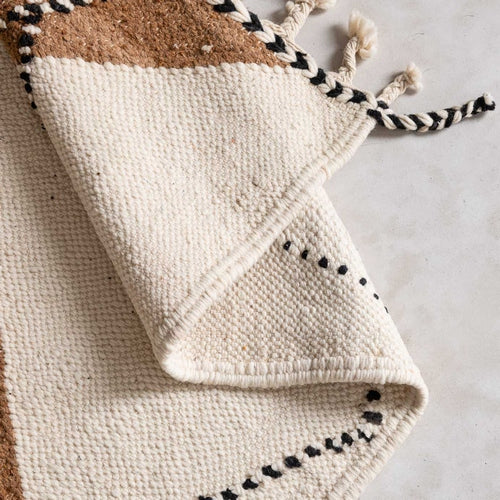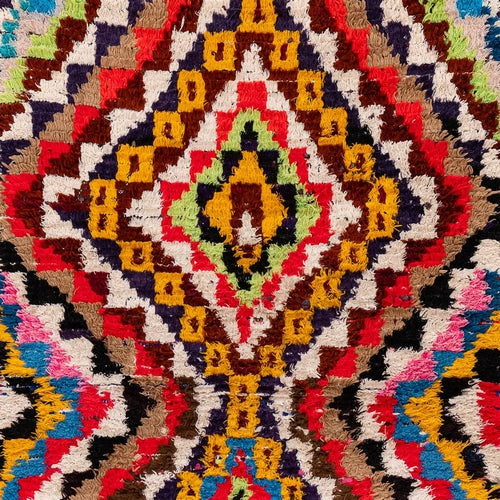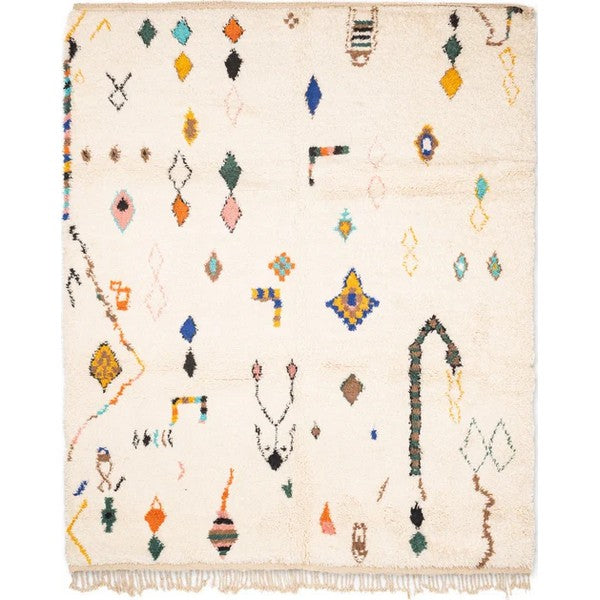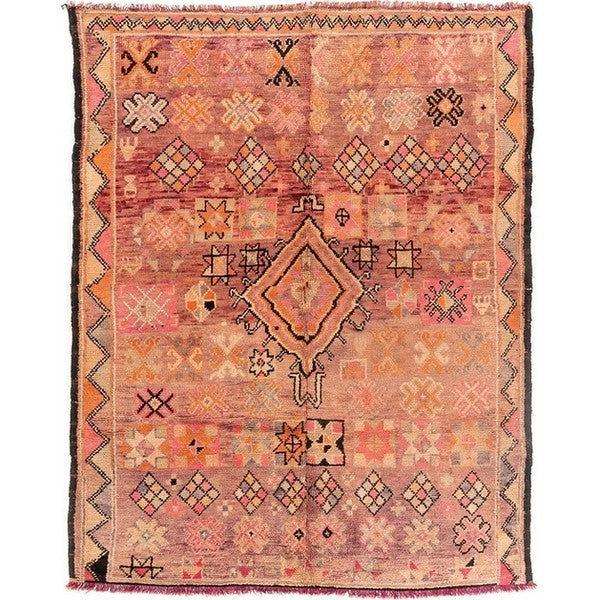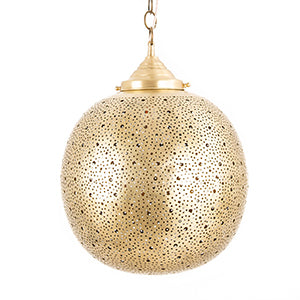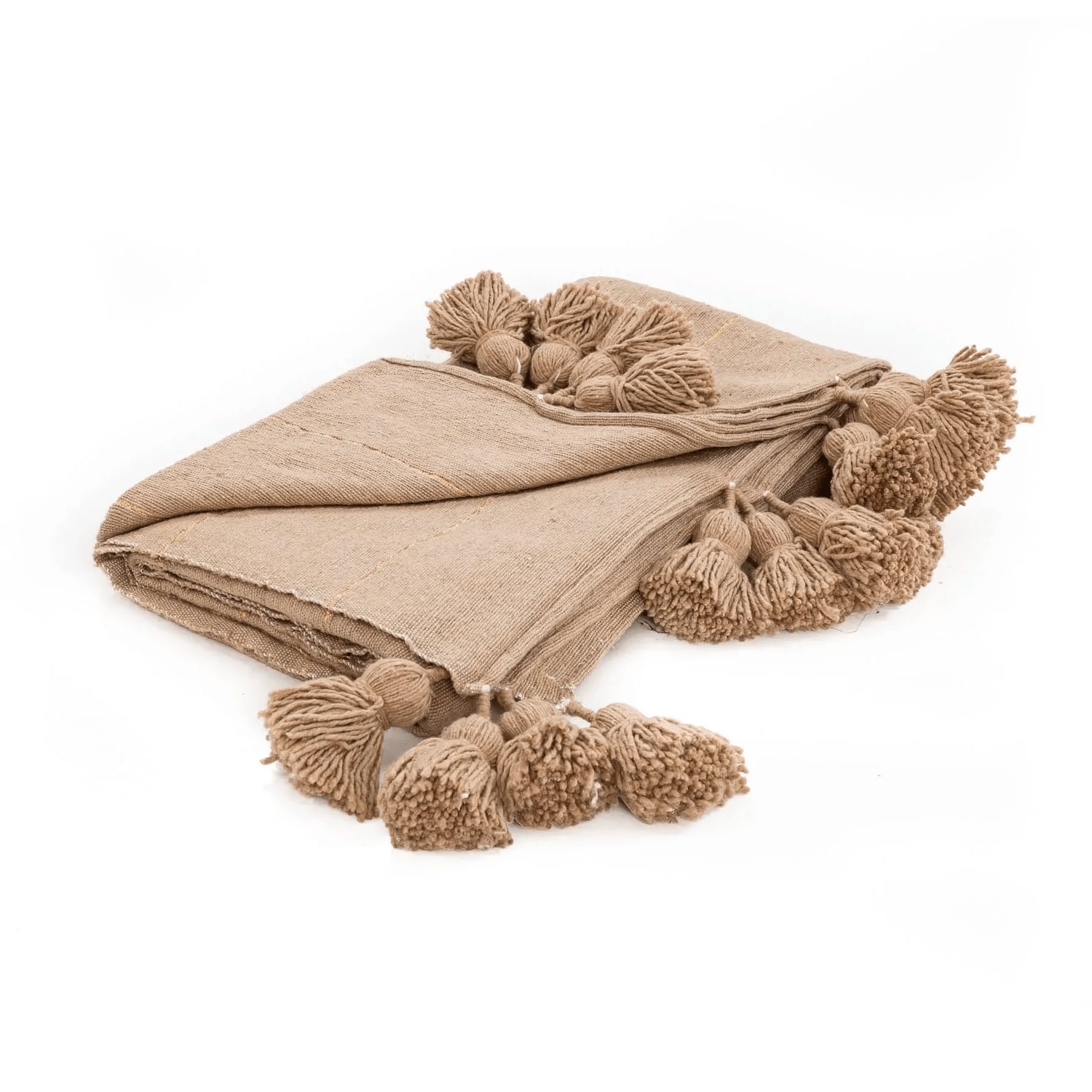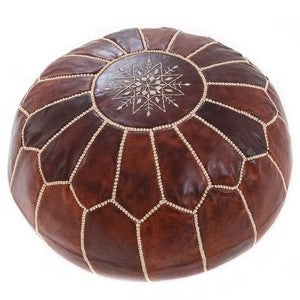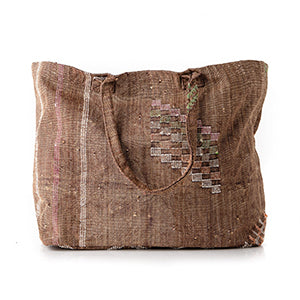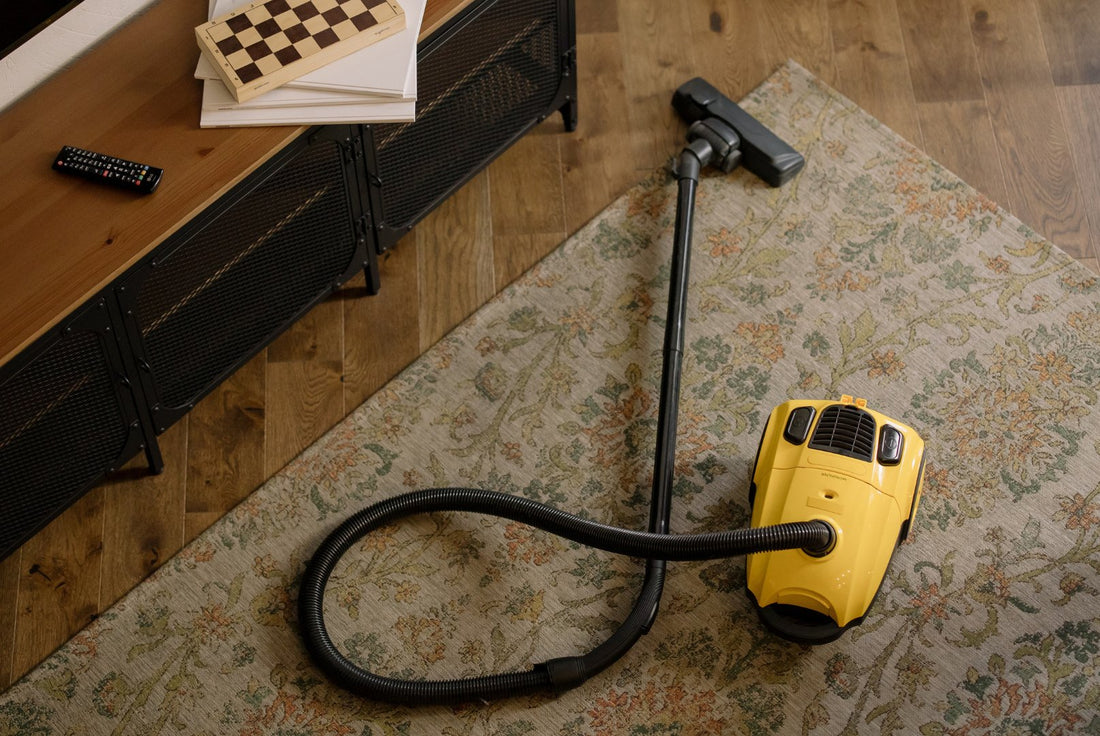Let’s talk about taking care of our Woolen Moroccan Rugs and how the good old vacuum cleaner can help us.
Vacuuming is for dusting
 You should think about the process of vacuuming as dusting your rugs in between the periodic washes they should have. A well dusted rug is easier to wash and also maintains its condition for longer.
You should think about the process of vacuuming as dusting your rugs in between the periodic washes they should have. A well dusted rug is easier to wash and also maintains its condition for longer.
If you have hard floors at home then you know how quickly a fine layer of dust comes to settle on it. These fine dusts are also falling on your rugs – it’s just not as noticeable. Wool rugs are a looser construction than carpeting and it will often take a POUND of dry particulate per sq. yard before it looks soiled. That’s a pound of dust, dirt and grit.
So, we should be dusting our rugs often.
Why is dusting important?
The danger is that once this dirt has settled on the tips of your wool rug’s fibres that is begins to be ground down into the base of the rug. When that happens, the sharp edged little tiny rocks cut the fibres and that is what causes the wearing of the worn areas in the rug. You will begin to see the foundations fibres show through as white lines or white knots.
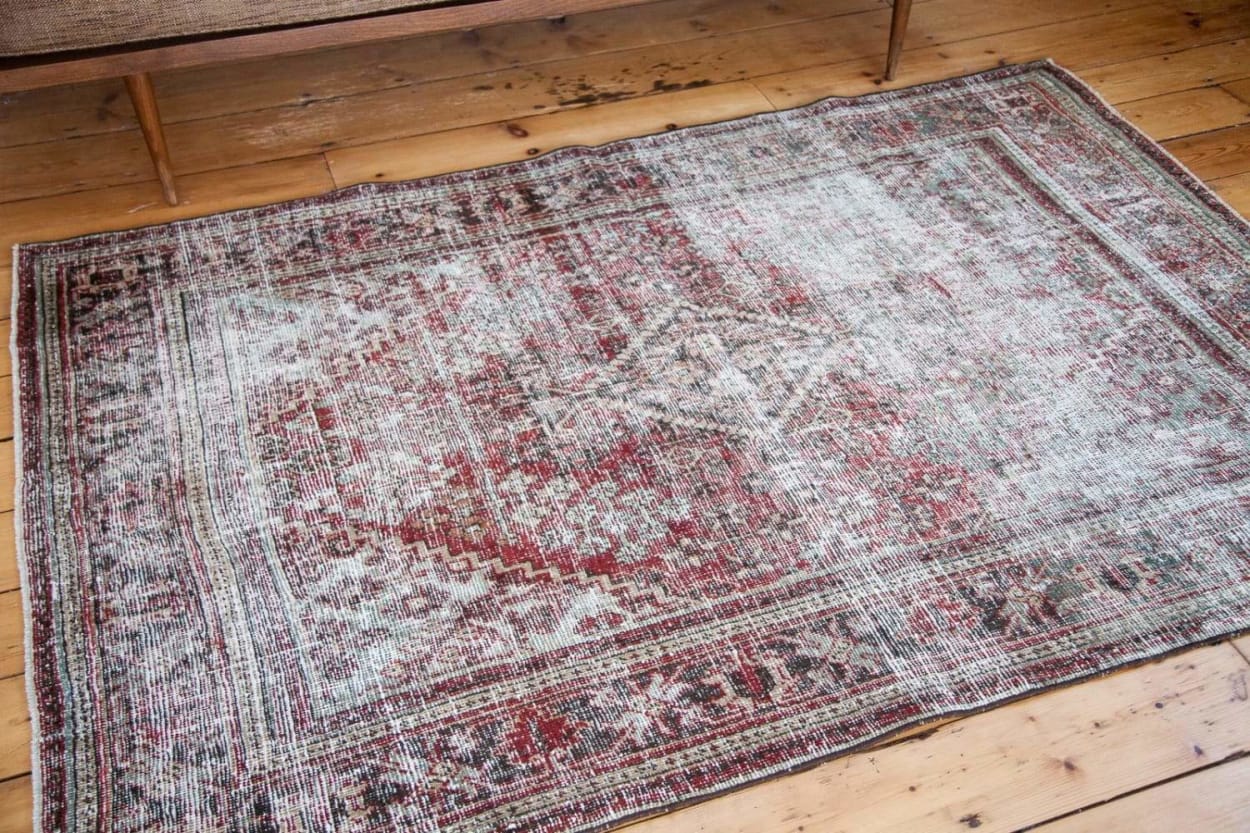
The real trick is to capture the dust/grit BEFORE it gets to the base of fibres. This is why regular dusting is a good thing.
 The traditional way to dust a rug is to hang it over a wall knock/shake the dust off. These days, it is usually easier to suck the dust off with a vacuum cleaner. With whatever vacuum you use, for dusting it is the “suction” that is more important than the power brushing. In fact, if you are going to use a brush careful consideration has to be given to whether the brush will be safe (or too aggressive) for the woolen fibres. Remember, we are dusting, not beating.
The traditional way to dust a rug is to hang it over a wall knock/shake the dust off. These days, it is usually easier to suck the dust off with a vacuum cleaner. With whatever vacuum you use, for dusting it is the “suction” that is more important than the power brushing. In fact, if you are going to use a brush careful consideration has to be given to whether the brush will be safe (or too aggressive) for the woolen fibres. Remember, we are dusting, not beating.Not all rugs are made equal
You will need to know a few terms to understand what kind of rug you have.
Pile: This refers to the thickness of the rug. Pile height is measured from the surface of the rug to it’s backing, and so the pile can be thought of as the fluffy bits of wool jumping up from the base.
Warp/Weft:

Woven rugs with thinner or no pile:
These would include Kilim Flatweave rugs. Here, you can use the upholstery (or stair) attachment.
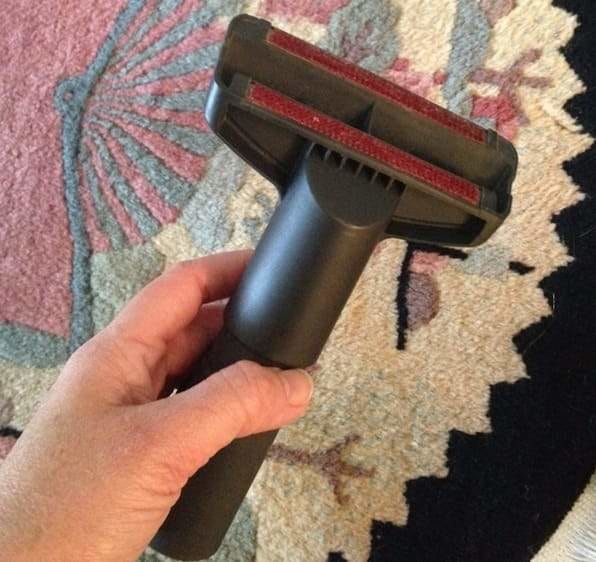
Use the upholstery tool on your vacuum to dust thinner woven rugs.
You need to determine the direction of the rug pile. If you brush your hand against the rug you will feel it either going along or against the pile (against is when you will be making the hairs stand up)
It is important to have any brushing actions running WITH the direction of the pile. Softer wool can break if you force it against the natural lay of the pile.

Every woven rug has a pile direction. Determine which fringed end the pile is pointing toward.
To “dust” this rug, you run the hand tool beginning at the top end of the rug, with short downward strokes moving from one side to the other side, with those strokes following the pile direction, until you have vacuumed the entire rug.

It is also wise to at least every other month dust the BACK of your smaller rugs. Because there is no pile direction on the back side you can simply run the vacuum tool across the back in any manner you want to. Though there may not be any “dust” on the back, this process can help prevent bugs from finding a comfortable place to make a meal.
Moths and carpet beetles like “still” areas with no direct sunlight, little air flow, and a food source. Flipping rugs around and dusting them disturbs them so they look for another place to eat. (If you really want to disturb bugs, then regular washing is the most disturbing thing you can do to them!
Hanging Rugs

Rugs on the wall must also be dusted.
The wool on Moroccan tribal rugs tend to be less chemically processed than city weavings, and this can be “tastier” to bugs. It’s possible that some bugs hitch a ride over in the export process of these rugs and so it is very important to make sure an infestation does not take root in rugs up on a wall for years without being touched.
Using the vacuum attachment can work fine with sturdier wall pieces.
- With rugs with pile, run the vacuum along the direction of the pile.
- With rugs of no pile, stroke the vacuum attachment across the width with the wefts if the rug has no pile. (Just a reminder, WARPS run the length of a hand woven rug – they are the fringe tassels of the rug, and WEFTS run the width of a hand woven rug.)
With delicate rugs you may worry that these tools may “fuzz up” the wool is the suction is too strong. If so, you can use a VERY soft brush (like a baby brush) and carefully make soft brush strokes across the WIDTH of the rug (side to side with the wefts) to loosen up any dust, grit or other particulates caught on the outermost fibres).
Brush the facing side at least once a month and the back quarterly. If you are dusting regularly then you should look to wash the rug once every 1-3 years, with more frequent washes being given to rugs in environments with lots of airborne contaminants (i.e. smoking rooms…)
Tribal rugs with buckling
This is a heftier tribal rug, but because it has some buckling (often present in tribal weaves) I would be too nervous to use a canister power brush head or an upright vacuum on this rug.
I would use the upholstery attachment to dust this rug, just to be safe.

The sturdier short pile woven rugs can have more of a proper vacuuming, but you do need to determine what is too much or just right for your pieces.
This is a larger, and more robust rug and this rug can be vacuumed.
With rugs like these, if I use the power head on my Vacuum cleaner, I turn the brush OFF, and I run my strokes side to side to run the suction across the rug rather than doing standard vacuuming strokes like I do on my wall-to-wall carpet with my brush on.

CORRECT: running the vacuum, with the power brush OFF, side to side across the width of the rug to dust it.
People are conditioned that if you have regular brush marks in the carpeting, that this means you have vacuumed properly. While this may be true with your installed carpeting (and helps you remember where your work has been!), with rugs you are NOT trying to make marks because marks mean pile distortion. Though some sturdier rugs may be able to handle this a few times, over time this will wear down the rug. Today’s upright vacuums are just too aggressive for wool rugs (and please NEVER use them on your silk rugs).
When to use an UPRIGHT beater bar vacuum.
The time to use an upright vacuum on STURDY rugs is when you want to shake out soil from out of the base of the rug fibers.
Once or twice a year (if you are regularly and gently “dusting” from the front side weekly or bi-weekly), you will take your sturdier rugs in your higher traffic areas to a smooth surface, and run your upright across the BACK side of the rug.
The goal here is not to suck dirt up through to the back, but is to shake and VIBRATE the back of the rug to help dislodge soil embedded in those fibers toward the floor.
If you do this on a rug that has not been dusted regularly you will be amazed at the pounds of soil that you can shake out of that rug.

This Sarouk rug is being dusted on the back side to help shake out soil to the front side.

Soil shakes out to the front side. Bend back the rug and see what comes out.
Here is another small rug that did not look dirty from the front, but had A LOT of soil embedded and ground into its foundation fibers. This grit causes fibers to break and valuable rugs to wear down and lose their value over time.

This power brush can have the brush rotation off but the suction still on. This allows for stronger dusting without worrying about pile distortion/damage on wool rugs.
Often the soil you will see come out will be the color of the rug because pieces of cut wool are shaking out with the contaminants. This Kerman does not look dirty on the front, but holy mackerel – it was holding POUNDS of soil inside its fibers.
This is why you plan to regularly wash wool rugs. They hide soil very well. If you wait until they look dirty, then your rug is already damaged. The key is to wash within that guideline (1-3 years) based on those factors we opened with – or ask your professional rug cleaner whether the rug looks dusty/dirty. When you have seen hundreds of thousands of rugs before/after wash like we have… you know when a wool rug should look better than it does.
This level of dry soil that is usually hiding in wool rugs is also why you NEVER have wool woven rugs cleaned in your home. Could you imagine a carpet cleaning machine running on top of your rug with this much soil embedded in it? It would make MUD in the base of this rug, which leads to even worse damage than not having it cleaned – mildew/dry rot, dye bleed and discoloration, and of course fiber degradation with that rough edged soil stuck to those fibers and then walked on afterwards.
When buying a rug - make sure it's cleaned first
Good rug merchants will wash their rugs before shipping to you to make sure they are bug free and in great condition when you receive it. We have used Benisouk to source many rugs from and we know they wash their rugs very well before shipping, so we don't have to worry about any stowaways or having to clean it when we receive it. Benisouk has a wide collection of authentic Moroccan Rugs and is worth browsing through if you are looking for rug inspiration.
